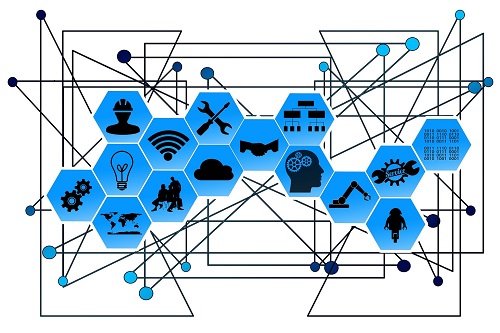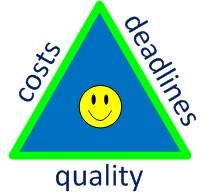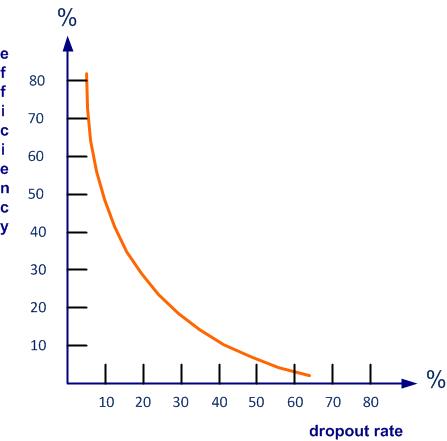1 Project
1.1 History
The word project, main characteristics, examples, project and process

The word project comes from the Latin: pro, which means “forward” and jacere, which means “to throw”
Succeeding in a project means accomplishing a dream
Every project is based on an expressed need and a team that provides an original solution.
The most marvelous projects date back to the dawn of time, such as the Great Wall of China, the pyramids of Giza, the city of Petra, the Colosseum, the Taj Mahal and the Eiffel Tower.
One of the essential concepts of work organization began in the 15th century with the interchangeability of parts, created by Johannes Gutenberg.
The genius of the Renaissance, Leonardo da Vinci, conceived and developed countless projects centuries ahead of his time.
In the 17th century, Jean-Baptiste Colbert desired and established quality regulations in manufacturing and commerce.
Adam Smith, in the 18th century, advocated the division of labor as a source of wealth and the market as a regulator of economic life.
Closer to modern times at the end of the 19th century, Frederick Taylor carried out detailed analyses of work (scientific organization of work).
Taylor's associate, Henry Gantt, is known for his (Gantt) chart used since the beginning of the 20th century.
In 1916, Henri Fayol published his famous text “Industrial and general administration” in which the five main functions of the industrial management of the company are listed: predict, organize, command, coordinate and control (POCCC).
In 1965, the International Project Management Association (IPMA) was created.
In 1969, the Project Management Institute (PMI) was created. The first edition of the PMBOK (Project Management Body Of Knowledge) - body of knowledge in project management dates back to 1987.
In 1989, the British government developed the PRINCE2 (Project In Controlled Environment) method.
In 2012, the ISO (International Organization for Standardization) published the ISO 21500 standard (Guidelines on project management).
In 2020, a new version was published under the title ISO 21502 (2020) Project, program and portfolio management — Guidance on project management.
The ISO 21502 (2020) standard differs from ISO 21500 (2012) by the format (from the process approachmanagement by the processes to better satisfy customers, improve the effectiveness of all processes and increase global efficiency (see also ISO 9004, Annexe B.5) to the practices approach) and modifications relating to the addition of:
- overseeing and management activities of the sponsor
- making profits
- the organizational context
- the environment favorable to success
- the life cycle of projects
- issues to be treated
- practices regarding benefits management and change control
- pre and post project activities
Any activity and practice can be represented by a processactivities which transform inputs into outputs (see also ISO 9000, 3.4.1) and vice versa; they are synonyms.
A project has three main characteristics:
- it is unique:
- it is a specific response to a need
- it has a product, service or event as a deliverable
- it includes uncertainties
- it has objectives to achieve
- its context is specific
- it has constraints
- it requires means (resources) such as:
- competent people
- time
- finances
- materials
- work
- support from top management (or a sponsor)
- it has a beginning and an end:
- is made up of steps (stages)
- ends with a positive financial solution (usually)
Deliverable (expected result): any unique and verifiable product, result, or capability to perform a service that must be produced to complete a process, phase or project (PMBOK)
Any project includes the control of:
- the organization of the team
- stakeholders
- the scope
- material resources
- improving staff knowledge and experience
- delays
- costs
- risks
- performance measurement
- purchases
- communication
The projects are countless. Some examples of generic projects:
- build:
- a house
- a building
- a highway
- a pyramid
- a nuclear power plant
- become:
- a craftsman
- an author
- a composer
- an interpreter
- an actor
- a translator
- a developer
- create:
- a business
- a program for a group of people
- a tool
- software
- a game
- equipment
- a machine
- an instrument
- a dish
- a drink
- organize:
- a show
- an event:
- birthday
- marriage
- exam
- vacation
- a campaign
- adaptation to climate change
- lauch:
- a product
- a store
- a rocket
- provide:
- a service:
- audit a management system
- outsource a process
- a service:
- finance:
- a business
- research
Table 1-1 shows differences and common points between a project and a processactivities which transform inputs into outputs (see also ISO 9000, 3.4.1).
Table 1-1. Project and process
| A project | A process | Common point |
| is unique, new, responsive, exceptional | is repetitive, under control | added value |
| has a start date and an end date | regularly starts and finishes | steps |
| has a temporary structure | has a stable structure | a structure |
| involves inevitable changes | avoids changes | changes |
| aims to obtain a specific result only once | aims to always obtain the same result | a result |
| includes an unknown risk, often high | includes an identified risk, often low | a risk |
| requires a significant investment | generates a profit | money |
| requires a multidisciplinary team | requires a competent team | a team |
| requires significant preparation (planning) | requires continual preparation, it is routine | preparation |
| establishes a set of specific documents | uses validated documents | documents |
1.2 Scope
Project scope, performance, certificates

The more precise the scope, the fewer problems will have to be solved later
Scope: description of what must be done to obtain the expected results
The scope (perimeter, content) of a project, cf. annex 01, often includes:
- the department:
- direction
- methods
- design office
- quality
- purchases
- logistics
- manufacturing
- reception
- the need (project description)
- the context:
- external issues
- internal issues
- deliverables:
- the product
- the service
- requirements:
- the characteristics
- the functionalities
- acceptance criteria
- what the product will and will not do:
- inclusions
- exclusions
- constraints
- the works
- technology
- the tests
The ISO 215002 standard provides recommendations only on project management. For recommendations on program and portfolio management, please consult the ISO 21503 and ISO 21504 standards.
The performance of a project, shown in figure 1-1, can be represented by a triangle and its three objectives (quality, costs, deadlines), which can also be considered as constraints.

Figure 1-1. The performance of a project
When you are asked to choose two of the three objectives of the project, “good, fast or cheap”, know that this is a tricky question! Any priority given to two of the objectives will be to the detriment of the third and this is often a bad omen.
Anyone with skills and some experience can earn a certificate in project management. The most popular are:
- PRINCE2 by AXELOS:
- Foundation
- Practitioner
- PMI (Project Management Institute):
- CAPM (Certified Associate in Project Management)
- PMP (Project Management Professional)
- PgMP (Program Management Professional)
- IPMA with versions A, B, C and D of IPMA (International Project Management Association)
Project management is used in many areas such as:
- the company
- construction
- the research
- insurance
- the bank
- the army
- energy
- aerospace
- trade
- medicine
- transportation
- communication
1.3 Benefits
Project benefits, root causes of failures, exuses

There is no project without risk, but, for a company, the greatest risk is not having a project
Expected benefits of exemplary project management:
- improved stakeholder confidence
- improvement of project performance
- improvement of the company’s reputation
- added value for the company
- obtaining a competitive advantage
- increased likelihood of achieving objectives
- increase in opportunities to be seized
- creation of something unique each time
- reduction of the risk of project failure
- decrease in losses
- establishment of an adequate framework for the implementation in a controlled manner of any activity
- establishment of a reliable basis for decision-making
- identification of gaps
- less work to redo
- optimization of resource use
- protection of company assets
- effective response to changes
- reduction of costs and deadlines
- reduction of operational surprises
- increased visibility of the responsibilities of each staff member
Managing a project means avoiding making mistakes
But a project can be poorly or even very poorly managed, cf. annex 02. 
According to studies by the Standish Group, the abandonment rate of a project is closely linked to its efficiency rate as shown in figure 1-2.

Figure 1-2. Efficiency and abandonment
 Examples of root causes of failures:
Examples of root causes of failures:
- lack of:
- resources
- monitoring
- poorly planned and insufficient budget
- poorly understood requirements
- inconsistent specifications
- unrealistic objectives
- unplanned activities
- unassessed risks
- insufficient support from top management
Who apologizes accuses himself
Common excuses for failure:
- it was the responsibility of top management
- this was not an explicit requirement in the contract
- how could I have an effective plan in the face of so many potential problems?
- give me enough time and everything will be sorted
- in the event of a serious emergency situation, the implication will be completely different
- there was not enough time
- there was no staff available
- there are more important things to do
- I was sure we could cope
- I didn't realize it was so serious
- I didn’t think it was a key process
- I didn't think this would happen
- insurance had to take care of this situation
- the contract was already signed
- you cannot plan for the unexpected
- we had not done this simulation
According to some studies, nearly 30% of projects are doomed to failure and more than 50% of projects exceed their initial budget.
Project science consists of preventing difficulties in execution. Luc de Vauvenargues
A list of project management successes and failures can be found in annex 03. 
